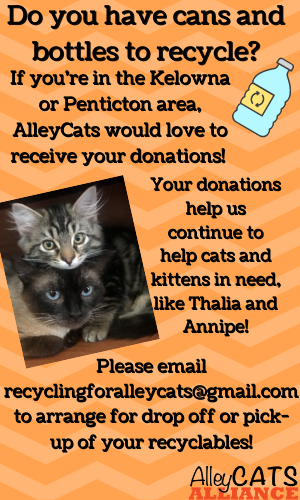Why De-clawing is Cruel
If you are considering declawing your cat, please read this.
It will only take a moment, and it will give you valuable information to help you in your decision.
First, you should know that declawing is something people do for their own convenience without realizing what actually happens to their beloved cat. In many countries, declawing is termed “inhumane” and “unnecessary mutilation.” In many European countries, it is illegal.
Before you make the decision to declaw your cat, there are some important facts you should know. Declawing is not like a manicure. It is serious surgery. Your cat’s claw is not a toenail. It is actually closely adhered to the bone. So closely adhered that to remove the claw, the last bone of your cat’s claw has to be removed. Declawing is actually an amputation of the last joint of your cat’s “toes”. When you envision that, it becomes clear why declawing is not a humane act. It is a painful surgery, with a painful recovery period. And remember that during the time of recuperation from the surgery your cat would still have to use its feet to walk, jump, and scratch in its litter box regardless of the pain it is experiencing. Wheelchairs and bedpans are not an option for a cat.
No cat lover would doubt that cats–whose senses are much keener than ours–suffer pain. They may, however, hide it better. Not only are they proud, they instinctively know that they are at risk when in a weakened position, and by nature will attempt to hide it. But make no mistake. This is not a surgery to be taken lightly.
Your cat’s body is perfectly designed to give it the grace, agility and beauty that is unique to felines. Its claws are an important part of this design. Amputating the important part of their anatomy that contains the claws drastically alters the conformation of their feet. The cat is also deprived of its primary means of defence, leaving it prey to predators if it ever escapes to the outdoors.
Although the medical community does not recognize this as a potential side effect, many people have said that their cat’s personality changed after being declawed. Cats can also suffer long-term mental disorders as a result of declawing, like severe chronic anxiety.
Okay, so now you realize that declawing is too drastic a solution, but you’re still concerned about keeping your household furnishings intact. Is there an acceptable solution? Happily, the answer is yes. A big, joyful, humane YES! Actually, there are several. You can teach your cat to use a scratching post. You can trim the front claws. You can also employ aversion methods.
Soft Paws
Soft Paws are lightweight vinyl nail caps that you glue on the cat’s front claws. They’re great for households with small children and are extremely useful for people who are away from home all day and can’t exercise the watchfulness necessary to train a cat to use a scratching post. Soft Paws are easy to apply and last about four to six weeks. They come in clear or colors–which are really fun. One negative side effect of using soft paws is that the skin can grow or press into the ail vocer and become painful. Your cat could also get an infection.
You need to remember, also, that the caps and nail trimming should only be used on indoor cats who will not be vulnerable to the dangers of the outdoors.
Cat Scratching Posts
Cats will always scratch, it is in their nature. The key is to provide your cat with a post that he/she prefers over your furniture.
Double-Sided Tape
Double-sided tape, such as “Paws Off!” is sticky on both sides. Simply apply it to the objects you would prefer your cat not scratch on, and his natural aversion to stickiness will put an end to the offending behaviour. The tape works as an aversion tool, but you still need to provide a place for kitty to scratch — such as a scratching post.
Feliway
Feliway is a synthetic analogue of the feline facial pheromone — sounds confusing, but it is really quite simple. Have you seen cats rubbing their cheeks on an object? What they are doing is depositing some of this facial pheromone on the object and marking it as theirs. This feline facial pheromone can also be thought of as a feel-good pheromone. Meaning cats sense this pheromone and it has a calming effect.
Cats are territorial by nature and like to delineate their territorial boundaries. Scratching is one of the ways cat mark their territory. Not only does scratching provide a visual marking of the territory (the shredded material) but also, cats have scent glands on the bottom of their paw pads which deposit a scent discernible only by other cats.
Spraying Feliway on objects you do not want your cat to scratch effectively deposits this feel-good pheromone so your cat doesn’t feel the need to scratch the object.
You will still need to provide a scratching post so there is a place for your cat to scratch.
Thank you for taking the time to read this article. If you have any questions or concerns please see your veterinarian.


